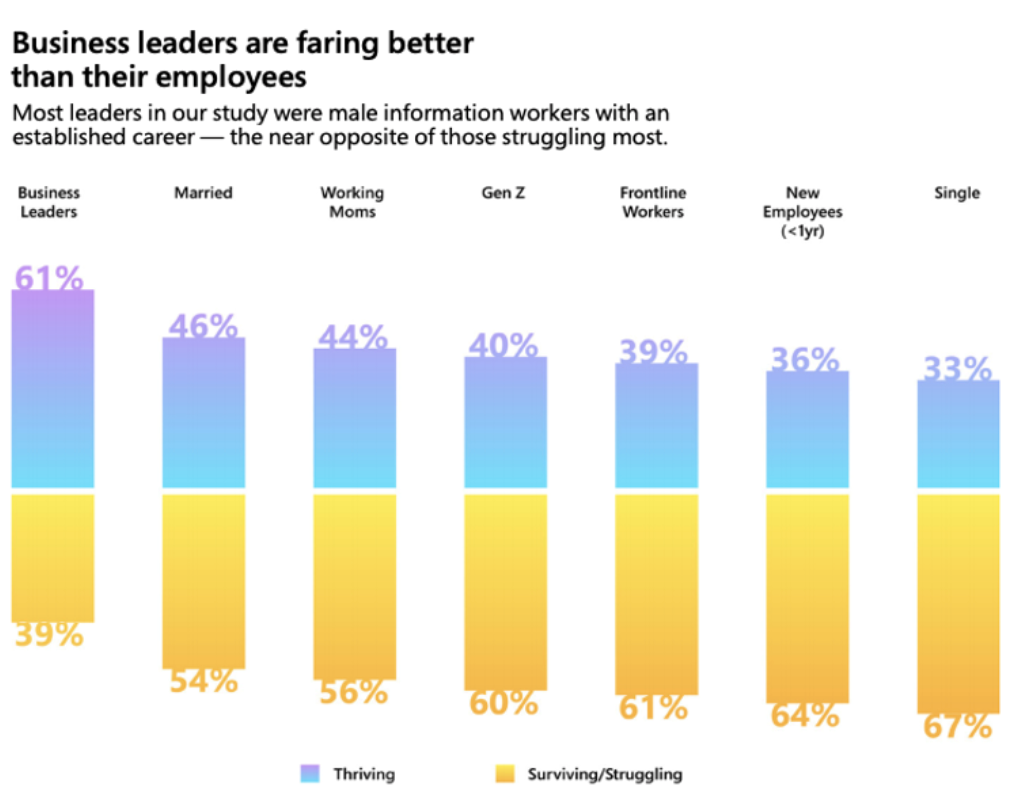Now that masks have (mostly) come off and vaccinations are hitting meaningful levels, we’ve launched into a global case study about the workplace that will undoubtedly be written about by Harvard Business School and debated for decades to come. Some companies like Goldman Sachs and JP Morgan are demanding ALL employees return to the office full time (WFO). Others like Apple and Facebook made initial pronouncements (everyone back in the office!) and have since changed their tune after employee outrage forced them to backtrack. Meanwhile, more and more companies like Twitter and Deloitte UK are committing to full-time remote promising employees they can work from anywhere (WFA).
There are no obvious answers. Therefore, some will make mistakes. Consider the dust-up Jamie Dimon, CEO of JP Morgan, experienced when he stated that “hustlers don’t work from home.” “We want people back to work,” he declared and then went on to say, “…and yes, the commute, you know people don’t like commuting, but that’s life. So what.”
So What?!
When I posted an article on LinkedIn asking, “So what?,” the response was overwhelming — more than 100 comments, all decrying the “cluelessness” of leaders like Dimon from a wide range of professionals, including organizational psychologists and career coaches predicting that there will be a mass exodus from companies taking such a hard line and that workers will be attracted to companies that offer a more flexible and trusting work environment. So what’s a 21st-century leader to do? Start with yourself and understand your own biases. Here are a few you might harbor:
Presenteeism Bias:
As leaders, many of us came of age during a time when we were trained to believe that if employees aren’t working within the eye’s view, they’re not working. It’s the basis for productivity bias, also known as “facetime bias.” Research has shown we assume employees are more dependable, harder workers, and more trustworthy when we see them at their desks. They could be shopping or scouring LinkedIn for their next job, but we have no idea in most cases. We just assume they are hard at work.
This facetime bias can be seen in Dimon’s choice of words: he says “back to work,” not “back to the office.” and it is one of the biggest challenges leaders face when they consider how and when (and if) to get people working in the office.
Leader Action: Do you think employees are productive only if they are within view? Why? The counter to presenteeism is to trust your employees. That means you’ll need to check your ego and make sure this isn’t about you. This also may be a communication issue. Consider increasing your employee check-ins so you can hear – rather than see – what your employees are doing. Use this check-in template to help improve your insight into your employees’ hard work.
Productivity Bias:
In the “Before Times’ (aka: pre-pandemic), companies like JP Morgan, Goldman Sachs, and others were already tracking employee behavior by the number of keystrokes on their computers, the number swipes by keycard into the company bathroom, and other extreme monitoring actions all intended to ensure they were getting the most out of their workers. Many of these “Big Brother” tactics were curtailed during Covid, and…drum roll please…productivity wasn’t impacted. In fact, JP Morgan’s Q1 2021 profits were up 399%, and Goldman Sachs net revenues jumped 47% over Q1 in 2020.
These results are not unique. Research has shown that productivity year over year stayed the same or increased. Lauren Mason, a principal and senior consultant at Mercer, noted, “Historically, there has been a perception in many organizations that if employees were not seen, they weren’t working—or at least not as effectively as they would in the office… this forced experiment around remote working as a result of COVID-19 has shattered those perceptions to prove that most employees can actually be trusted to get their work done from home.”
Leader Action: Productivity bias is really about accountability and fear – your fear. Leaders worry: “If employees aren’t productive, we won’t meet our business goals. If we don’t meet our business goals, my job may be at risk.” But your fear shouldn’t harm your employees. Do the research. Has productivity gone down during the pandemic? In many cases, the answer is just the opposite. It is also true that the best leaders saw the best results during the pandemic – up to a 40% increase in productivity. Being productive isn’t about being in the office; it is about creating a culture that puts people first.
Anchoring Bias
It’s hard to change when what you have known has worked for you. And, the workplace as we have known it has, for the most part, worked for leaders even during the pandemic. A study by McKinsey of over 30,000 global employees found that working moms, frontline workers, single employees, and others struggled significantly during covid. Business leaders? They thrived. Why? Because they already had the infrastructure in place to succeed in a remote working world:
- They were already used to “remote working” due to their high propensity to travel and to managing global teams;
- They already had time mastery (the ability to control when and where they worked);
- They were able to be the “ideal worker” because they typically have a spouse at home caring for children and the household.

Source: McKinsey
Leader Action: Having the empathy to understand the lived experiences of your employees is critical to being a good leader in these chaotic times. And so is having the humility to understand that you may be the beneficiary of forces beyond your control. Great leaders are both empathetic and humble. It starts by being curious. Ask yourself, as a leader, was your experience different than that of your employees? Seek to better understand what those differences look like, and why they arose.
Confirmation Bias
When it comes to where, how, and when we work, some argue the bias to working in the office is generational.
But it goes well beyond that. We tend to believe the data that validates our preconceived ideas and assumptions. We also tend to listen to people who agree with us. Together, this confirmation bias can hamstring innovation and our own ability to grow. Boomers and Gen X leaders may be listening to those who reinforce their perception that working in an office together is key to culture and creativity. But the jury is still out on this. As I said before, we’re in the midst of a case study. We won’t know what drives creativity and what nurtures culture for years to come. In the meantime, being open to an alternative solution or approach is the mark of a true 21st-century leader.
You can learn more about how to be a best-in-class modern leader by reading our HEARTI™ Leader’s Playbook: Tools, Tips, and Tactics for Leading in the New World of Work. Download your complimentary copy here.






